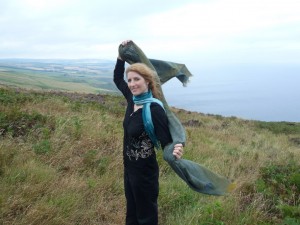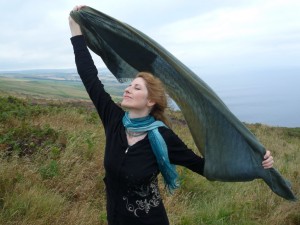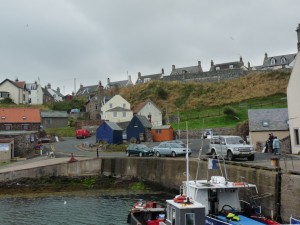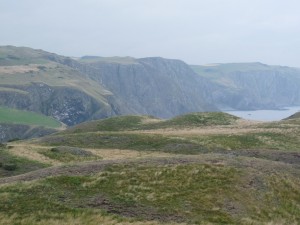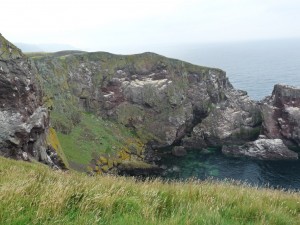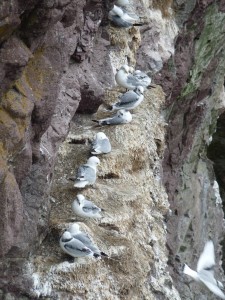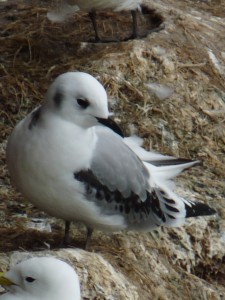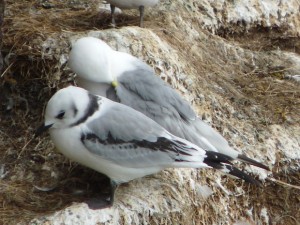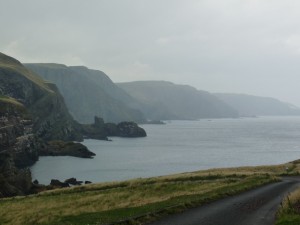The feeling of standing on top of a cliff with the wind blowing through your hair, out to the North Sea, can really clear your mind, your body and your soul.
Leave behind all worries, breath deep and let go, (just don’t let go of that nice shawl that you’re holding as the wind whips!)
The beginning of any good journey should have some time to assimilate and absorb, relax into the moment and be happy.
Don’t just rush into it with a vengeance, you’re probably too tired from the flight anyways!
We had fun shooting these pictures on the drive down from Edinburgh to Northumberland. The day was windy, cloudy and cold, but it felt so good to be out in the fresh air and know that I was there at last. My wonderful boyfriend Gary shot these photos of me, he shares my love of nature and the countryside.
On our drive we stopped at some small port towns, watching the fishermen’s boats and thinking of how tough that life must be. This is in the town of St. Abbs in Berwickshire Scotland, in what they call the Scottish Borders.
Then we stopped at St. Abbs Wildlife Reserve along the coast. It’s very exposed but popular for bird watching and seeing the beautiful cliffs. We sat for awhile in the car looking out to take a break from the cold wind, while we sat I spotted a Stoat just running along the top of the bank you see in the photo. Gary said it’ll be after rabbits, it was an attractive animal, one worth doing a little painting of.
We walked around and then closer to the edge, being very careful of course! The water was a gorgeous deep aqua blue color and the cliffs were a flurry of activity from the birds coming and going.
A nice neat row of gulls. At first glance I thought these were black headed gulls in winter plumage because they have the tell tale spot behind the ear. (Ah…didn’t wash behind the ears, don’t tell mom!) But when I looked in my field guide (“The Hamlyn Guide to Birds of Britain and Europe”) I saw that they have yellow legs and a light beak. When you bird watch the fun part is deciphering the markings of birds and figuring out what kind of bird it’s NOT. Process of elimination many times is what works. See more description below.
At first it looks like two different species of birds, but the one in the forground is an immature and the one behind is an adult, both Kittiwakes. They have both have black feet, the immature has a partial ring around the back of it’s neck a black spot behind the ear and a black beak; the adult has a yellow beak. It’s like solving a puzzle, that’s why I like birding. Though I am NO expert by far, especially at shore birds as I don’t get to see them often. But I like to show how you can enjoy them and figure out what kind they are by looking up clues in your field guide or going online to search.
Well here’s one last photo of the coast.
Please sign up your email in the box at the RIGHT > to receive notice of when I put up new posts. More coming soon!

